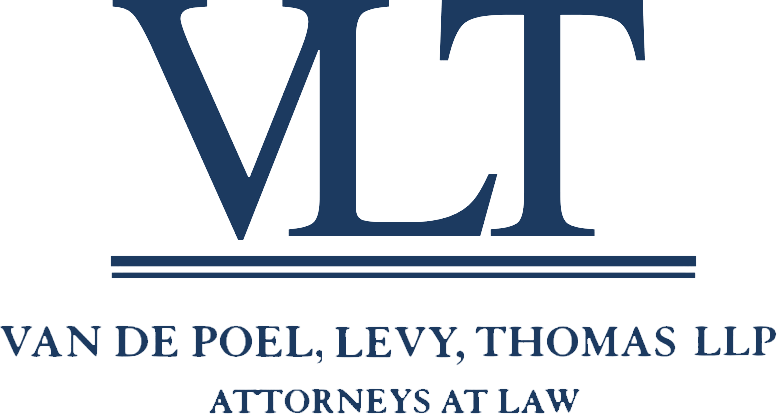The scary thing about the story of the three little pigs is that despite the fact that they all took different measures to protect themselves, they all had the same amount to lose: 100% of their personal assets. Business owners face the same dilemma: no matter whether a business has $1000 per month in revenue or $1,000,000 per month in revenue, the owners have the same risk exposure – they could lose all of their personal assets if something goes wrong. But, what about that fancy LLC, S-Corp or LLP they set up to keep their personal liability limited? Well, just because a business owner forms a limited liability entity does not mean that the separation that was theoretically created to shield them from personal liability (referred to often as, “the corporate veil”) will survive. This article explains how a business owner can strengthen or weaken the corporate veil.
1. Why does society permit limited liability entities?
Before we get into how to protect personal assets from business liabilities, it might be helpful to understand why business owners are permitted to create entities to limit their personal liability in the first place. In short, public policy in California (and the United States, as well as much of the modern world) supports the idea of business innovation. That is, businesses are good for society because they employ people, permit deployment of new technology, etc. However, many would-be business owners would never become business owners if they had to place at risk every personal asset of theirs just to conduct the business.
Let’s say a woman has a nice family home with two cars and a great savings account set aside to send her kids to college. She wants to open a medical device manufacturing company to make wonderful devices that can cure cancer. Without the benefit of a limited liability entity, she could still build medical devices and sell them to people. But, what if one of the devices falls off a shelf and crushes somebody? The injured person could sue her personally, and she may have to give up the savings account, the cars and even some of the equity in her house to pay for those injuries. Faced with this type of high-risk prospect, will this lady (or any other person) ever enter into this important business? Many times, the answer is no.
Society needs people to be able to take limited risks when they go into business. So, as a society, we permit a person, like this business owner to establish a limited liability entity, whereby she contributes a certain amount of money (capital) to start the company. Only that capital is available to pay creditors (like an injured person in the above example). This is a much more palatable level of risk, and this approach encourages more people to move forward with worthwhile businesses.
The practical result of this social policy is the creation of limited liabilities entities (for example, corporations, LLCs and LLPs). These entities permit business owners to decide how much of their personal assets to put at risk for a business venture. As long as creditors and others who deal with the entity understand the limitations on the assets available, then this arrangement is deemed fair. But, when business owners misuse these entities, these protections can be lost completely.
2. What business owners should do business through a limited liability entity?
Nearly every legitimate business operation can benefit from at least considering creating and operating through a limited liability entity. Picture two different businesses – one builds medical equipment and earns $10,000,000 per year, the other is a small bookstore that earns $10,000 per year. Which business has more exposure? If you guessed the medical equipment manufacturer, you would be…wrong. While they have different types of risks, both businesses create the same total exposure for their owners. Exposure has less to do with revenue or business size and everything to do with how much a creditor could come after the owner for if something goes awry. If a medical device fails, someone could die. That is obviously a lot of potential damages. However, a small bookstore could negligently cause a fire that hurts somebody, which could be just as much potential damages. The point is that all business owners have huge exposures even if they don’t have huge revenues.
Sure, a business owner can (and should) mitigate their exposure to risk through as many mechanisms as they can afford for the size of their operation (write policies and procedures, purchase insurance, transfer risk through contracts, etc.), but nothing can protect a business from 100% of the risks. For example, a business may be liable for the deductible under the insurance policy, or the insurance policy may not cover the type of injury at all. Not all risk can be mitigated effectively, and any risk exposure left behind is the responsibility of the business. The goal of a limited liability entity is to keep that risk sitting solely with the business and not letting it bleed over into a risk to the personal assets of the business owner.
3. How can a business owner’s personal assets become subject to a creditor attack even if a limited liability entity is used – that is, how do corporate veils get pierced?
This process starts at the end of the above risk management process. When the business has net liabilities remaining even after it has exhausted all of its assets, the creditors start looking for other sources of money to attack. One of the first places the creditor goes looking is the owner’s personal assets. As you can imagine, after a business owner has spent time and money setting up a limited liability entity, it can be infuriating to have a creditor attack personal assets. Courts in California have taken a serious look at the public policy behind limited liability entities and tried to balance fairness to the business owner and the reasonable expectations of creditors. The result is a fairly lengthy list of factors that are looked at to determine whether a corporate veil will be pierced.
California’s seminal case on the topic is Associated Vendors, Inc. v. Oakland Meat Co. In Associated Vendors, the court summarized the basic rules for when a creditor can pierce the corporate veil as involving a two element test:
(1) Is there is a “unity of interest” between the owner and the entity such that the separate personalities of the corporation and the individual no longer genuinely exist?
(2) If the acts are treated as those of the limited liability entity alone, would an inequitable result follow?
In other words, has the business owner conflated the owner’s personal life with the business self, and, in doing so, unfairly harmed a creditor. If so, the corporate veil may be able to be pierced, and the business owner held personally liable for acts undertaken by a business entity. Associated Vendors identifies a number of factors relevant to determining whether the corporate veil can be pierced. They can be summarized as follows:
1. The commingling of personal and business funds and other assets.
2. The unauthorized diversion of corporate funds or assets to other than corporate uses.
3. The treatment by an individual of the assets of the corporate as the business owner’s own personal assets.
4. The failure to obtain authority to issue stock or to subscribe to or issue the stock.
5. The holding out by an individual that he is personally liable for the debts of the corporation.
6. The failure to maintain minutes or adequate corporate records.
7. The confusion of the records of the separate entities.
8. The identical equitable ownership or leadership of the two entities.
9. The domination of control or ownership by a single person.
10. The use of the same office or business location.
11. The employment of the same employees and/or agents.
12. The failure to adequately capitalize the entity.
13. The use of a corporation as a mere shell, instrumentality or conduit for a single venture or the business of an individual or another corporation.
14. The concealment and misrepresentation of the identity of the responsible ownership, management and financial interest of an entity.
15. The disregard of legal formalities.
16. The failure to maintain arm’s length relationships among related entities.
17. The use of the corporate entity to procure labor, services or merchandise for another person or entity.
18. The manipulation of assets and liabilities between entities so as to concentrate the assets in one and the liabilities in another.
19. Contracting with another with the intent to avoid performance by use of a corporate entity as a shield against personal liability.
20. The use of a corporation as a subterfuge of illegal transactions.
21. The formation and use of a corporation to transfer to it the existing liability of another person or entity.
It is important to note that none of these factors is dispositive on its own, but the more of them that occur, the more at risk the business owner is to an attack on the protections of the corporate veil.
4. How can business owners strengthen the corporate veil?
Here are five major ways a business owner can improve their defense against an attempt to pierce the corporate veil:
a. Properly set up the business entity in the first place. Not setting it up properly is a significant precursor to many of the other Associated Vendors factors. Avoid “canned” legal advice and filing “kits” bought online or in books. Make sure the proper entity is selected, the correct filings completed, necessary contracts created, and other paperwork filed. Capitalize the entity adequately.
b. Follow proper corporate formalities going forward. For the most part, shareholders elect board members and board members appoint officers, while officers conduct business for the entity, and directors and shareholders do not typically have authority to sign on behalf of an entity. Understand these roles and make sure actions you take are done in the right representative capacity. Conduct annual shareholder meetings and board meetings. Formally resolve to install the board and officers. Issue stock in exchange for capital infusions. Record and keep board meeting minutes. Form and follow bylaws. Contract in the name of the entity, as executed by an officer in their official capacity.
c. Keep business and personal money, assets, and activities separate. Do not use business equipment for personal purposes, and vice versa. Do not send employees on personal errands. If you must conduct business between your personal estate and your business, create an arms-length agreement between the business and your personal estate.
d. Be clear with third parties as to whether they are dealing with you individually or your business. Never promise your personal assets as a guaranty for business activities. Use your officer title on business cards and emails not your personal information. Apply for loans as an entity. Don’t accept payment by personal favors for business debts.
e. Have a strong moral compass when dealing with third parties especially when dealing with creditors. Do not hide liabilities behind a shell entity. Do not hide behind an entity knowing you expect to not follow through on your promises. Do not conceal the true management of the entity. Be honest with creditors, customers, suppliers and other third parties about what they are getting into when they deal with you.
It is legal for business owners to use a limited liability entity for business activities rather than putting their personal assets at risk. However, to get the benefit of such a separation, business owners need to respect the entity structure, abide by the legal formalities, and be honest with the people they deal with. If they do, the chances of surviving an attempt by a creditor to pierce the corporate veil will be significantly increased.
If you are forming an entity or want to ensure you are properly complying with corporate formalities, we welcome the opportunity to discuss those matters with you. Until then, this is just general information on the current state of the law, not specific legal advice for you pursuant to an attorney-client relationship.





















